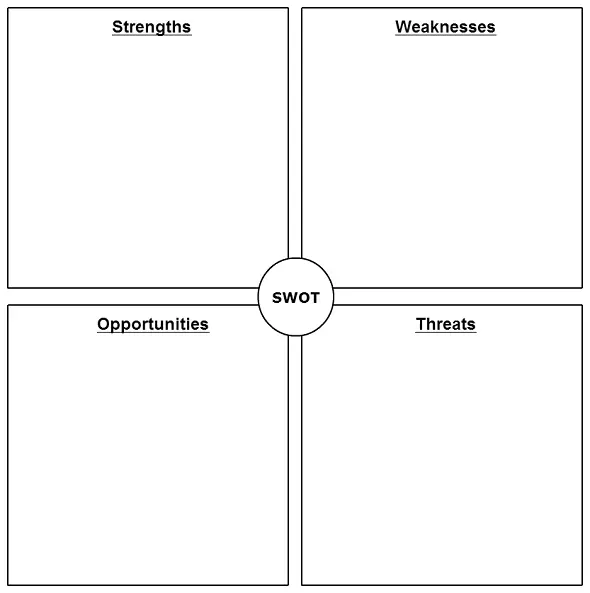Having an idea is just the start. The real work is around bringing that idea to life and creating a viable product that is ready to be brought to market. This requires a systematic approach that correctly identifies a market need and creates a solution to fulfill it. A well-structured product development cycle navigates this process and prevents you from getting lost in the weeds of ideation, testing, and iteration. This guide delves into the various stages of the product development process and helps you use the framework as a compass to guide you as you go about developing a product.
- What is the product development cycle
- Product development vs product management
- Stages of product development
- Tips for effective product development
The Product Development Cycle
The product development cycle is the backbone of product innovation, it provides a structured framework where ideas are systematically transformed into market-ready products. It outlines a structured path that helps you minimize risks and optimize the potential for product success.
Product Development vs. Product Management
Product development and product management are often used interchangeably, yet they represent distinctive phases in the product life cycle. Product development primarily involves the creation of new products or services, while product management encompasses the broader lifecycle, from inception to post-launch management.
The Six Stages of Product Development
Stage 1: Idea Generation
You need an idea to develop a product. The idea generation phase is the first step in the new product development process. Here, customers serve as the foundation for producing concepts. Ideas can be born from market research, analyzing customer requirements, identifying technological gaps, competing products, novel designs, and existing product issues.
Ideation unfolds in multiple stages, commencing with innovation and culminating in actualization. Here are some idea-generation techniques used at this stage:
Brainstorming: Unleashes a torrent of ideas, initially free of evaluation, followed by a careful review to select the finest.
Reverse Brainstorming: Flips the problem-solving script by generating solutions for issues at their core, addressing the root cause.
Idea Mapping: Transforms brainstormed ideas into visual maps using graphical designs, diagrams, and drawings to enhance comprehension and development.
SCAMPER: Utilizes seven concepts - Substitute, Combine, Adapt, Modify, Put to other uses, Eliminate, and Reverse - to prompt inventive problem-solving.
Five “Whys”: The “Five Whys” method dives deep into issues by repeatedly asking “why” to unearth the root cause and devise appropriate solutions.
Stage 2: Concept Development and Evaluation
After you identify an idea you move on to creating a product based on it. It involves detailing your product concept and understanding the landscape it exists in. This is when you carry out market research to comprehend consumer behavior and the target markets. Additionally, it involves receiving feedback from customers about your product, conducting surveys, and learning about their needs and issues concerning a certain product.
Product Research: Evaluating how the product concept resonates with the market to gauge its development potential.
Risk Analysis: Learning from past hazards in similar product or process development and applying these lessons to minimize future risks.
Customer Analysis: Understanding the target audience’s motivations and needs.
Competitor Analysis: Evaluating market dynamics, including market share, costs, pros, cons, benefits, drawbacks, strengths, and customer feedback on competing products.
Audience Research: Engaging in surveys to identify potential customers among a chosen group of individuals.
SWOT Analysis: Identifying strengths, weaknesses, opportunities, and threats inherent in the market and product.
Marketplace Data: Assessing retail pricing and supply-demand dynamics.
Market Trends: Studying stock market fluctuations to gauge market demand for existing products.
PEST Analysis: Exploring political, economic, social, and technological factors shaping product sustainability in the market.
In this phase, the product concept is refined, and a detailed Product Requirement Document (PRD) is crafted, mapping out product features, specifications, and functionality. This phase also involves rigorous feasibility studies to determine if the concept is both viable and sustainable.
Stage 3: Design and Development of a Prototype
In this stage, the conceptual blueprint transforms into a working model of the product. This tangible prototype can take various forms, including low-fidelity or high-fidelity versions. Using a range of prototyping tools and techniques, you create a functional representation of your product to assess its feasibility, functionality, and design.
Usually, it takes several prototypes to produce a final example of the product. After production, each prototype will undergo testing to ensure that it satisfies the final standards.
The prototyping phase ends with you arriving at a Minimal Viable Product (MVP). An MVP consists of only the essential features required for a successful launch and excludes any additional functionalities that are non-essential for its core operation.
Imagine you’re developing a project management software application. The minimum viable product (MVP) for this software might include fundamental features like task creation, project organization, and user collaboration capabilities. However, it would not initially include more advanced functionalities like time tracking, detailed reporting, or third-party integrations.
By releasing this MVP, you can get your software into the hands of users sooner and start gathering valuable feedback. As you receive input and understand user needs, you can then prioritize and implement additional features in subsequent updates to make the software more comprehensive and valuable to your users.
Stage 4: Testing and Validation
Testing and validation ensure the product meets user expectations. There are various dimensions in which a product needs to be tested including: Performance Testing:
Performance testing is a crucial aspect of ensuring your product functions optimally. It involves subjecting the product to rigorous quality tests, including stress tests, load tests, and environmental tests. Stress tests evaluate the product’s robustness under extreme conditions, simulating peak user loads or resource constraints. Environmental tests assess how the product performs in different environmental conditions, ensuring it remains functional across various situations and locations.
User Acceptance Testing:
User acceptance testing is a pivotal phase that focuses on involving the end-users in the testing process. This step enables real users to interact with the product and provide feedback on its usability, functionality, and overall experience. User acceptance testing helps ensure that the product aligns with user expectations and can effectively address their needs. It often involves creating test scenarios that mimic real-world usage and verifying whether the product meets these requirements.
Industry Compliance:
Every industry has specific regulations and standards that products must adhere to. Industry compliance testing is essential to ensure that the product complies with these standards, meeting legal and safety requirements. Failure to meet industry compliance can lead to serious consequences, including legal issues and recalls. Therefore, it’s crucial to thoroughly test the product for compliance with relevant regulations and standards in your industry.
Stage 5: Production and Launch
The Production and Launch phase is a critical transition point in the product development process, where your concept and design evolve into a tangible, market-ready product. This phase demands meticulous planning and coordination to ensure a seamless transition from development to production. It’s about turning your vision into reality, preparing the supply chain, and crafting an effective marketing strategy to set the stage for a successful launch that gives your product the visibility and traction it deserves.
Manufacturing Preparation: The first step in this phase is to prepare for production. It involves setting up the production facilities, procuring necessary equipment, and ensuring the availability of raw materials. Production planning must be precise to meet demand and maintain quality standards. This is where you turn prototypes into actual products, fine-tuning the manufacturing process to optimize efficiency.
Quality Assurance: Quality control is paramount during production. Implementing strict quality assurance processes ensures that each product rolling off the assembly line meets the predetermined quality standards. This step prevents defects and issues that could lead to product recalls or customer dissatisfaction.
Supply Chain Optimization: To ensure smooth production and delivery, supply chain optimization is crucial. It involves coordinating suppliers, manufacturers, and distributors to minimize delays, reduce costs, and maintain efficient inventory management. An optimized supply chain is essential for meeting delivery deadlines and minimizing lead times.
Marketing Strategy: Concurrently, your marketing team should be working on a robust marketing strategy. This strategy should encompass various elements, including identifying your target audience, crafting compelling marketing messages, and selecting the most effective marketing channels. The goal is to create anticipation and generate interest in your product before it even hits the market.
Pricing Strategy: Deciding on the right pricing strategy is a pivotal element of your product’s success. It should be based on a thorough analysis of production costs, market demand, and competition. The chosen pricing strategy should balance profitability and affordability for your target audience.
Distribution Channels: Planning your distribution channels is equally important. Whether you opt for a direct-to-consumer approach, selling through retailers, or a combination, the choice should align with your target market’s preferences. Setting up efficient distribution channels ensures that your product reaches your customers effectively.
Logistics and Inventory Management: Managing the logistics of getting your product to market is a multifaceted task. This includes transportation, warehousing, and inventory management. Efficient logistics are essential for on-time delivery and maintaining an optimal level of inventory to meet demand without overstocking.
Market Entry: The product launch is a significant event that requires careful orchestration. This is the moment when your product steps into the spotlight, and first impressions matter. Leveraging various marketing tactics, you generate awareness and excitement among your target audience, building anticipation for your product’s availability.
Stage 6: Post-Launch Evaluation and Iteration
A product’s life extends beyond its launch date. This stage is marked by continuous improvement and growth. Post-launch evaluation involves assessing the product’s performance using Key Performance Indicators (KPIs). These metrics serve as a guide to understanding the product’s real-world performance. They enable you to identify areas for enhancement and opportunities for iterative development, ensuring your product remains competitive and responsive to evolving market demands.
Tips for Effective Product Development
1. Cross-functional collaboration: Successful product development requires the cooperation of multiple teams, including marketing, design, engineering, and more. Encourage open communication and collaboration to harness the full range of expertise within your organization.
User-Centered Approach: Prioritize the needs and preferences of your target audience. Collect user feedback, conduct usability testing, and iterate your product based on real user experiences. This approach ensures that your product resonates with your intended users.
Agile Methodology: Adopt agile practices to remain flexible and responsive to changes throughout the development process. Regularly review and adjust your product based on customer feedback and evolving market trends.
Prototyping and Testing: Develop prototypes to validate your ideas and concepts. Test these prototypes rigorously to identify potential issues early in the process, reducing development costs and risks.
Scalable Infrastructure: Plan for scalability from the start. As your product gains traction, it should easily accommodate increased user loads and feature enhancements. Scalability prevents technical bottlenecks and supports long-term growth.
Understanding the fundamental stages of product development is essential, but it’s equally crucial to acknowledge that product development is an ongoing journey, not a destination. Embracing innovation and continuous improvement drives successful product development, fostering a culture of adaptability and creativity that ensures your products remain at the forefront of the market.







